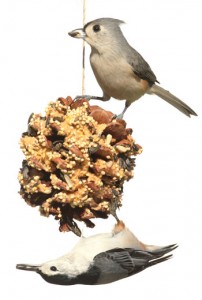 By Kathleen Johnson and Karen Maynard, MetaZoo Educators
By Kathleen Johnson and Karen Maynard, MetaZoo Educators
Winter will soon be behind us and warm spring days are on the way! With the spring season comes new life and new opportunities to take better care of the wild creatures around us. Animals such as box turtles, snakes, frogs and chipmunks are all coming out of hibernation. Many songbirds are returning from their migration. Animals such as rabbits, gray squirrels and opossums are having babies and raising them.
Although we may enjoy seeing wildlife up close, there are ways to be helpful without being unintentionally harmful to our native friends. How can you turn your backyard into a more wildlife-friendly space? What do you do if you find baby animals? Should you keep wild animals as pets? It doesn’t take a lot of money or time to take care of the world around us. Here are some tips and fun family projects that you can try during this spring season:
- Make your own birdfeeder. Include an assortment of food items such as fruit, berries, nuts, seeds and suet to attract a variety of birds. Birdfeeders can easily be made from pinecones, 2-liter bottles and milk cartons. Be creative!
- Wildlife needs water. You can provide water year-round by installing a bird bath — just remember to change the water often to prevent the growth and reproduction of bacteria and mosquitoes!
- Give the birds a hand by providing some nesting material. Place materials that blow around in small baskets or mesh bags and hang them on a tree branch. Try small twigs, pieces of cloth or yarn, pet fur, moss, etc.
- Provide shelter for some winged creatures by building a birdhouse or a bat box!
- Plant new flowers or shrubs this spring. Try planting species that provide year-round shelter or food for our native wildlife. Trumpet creeper, serviceberry, viburnum, red raspberries, and butterfly milkweed are some examples of plants that animals love and they look pretty too!
- Many animals that seem to be abandoned are not. For birds, learning to fly is an experiment that involves falling/flying out of the nest. White-tailed deer and other animals such as rabbits leave their young for extended periods of time each day and return to take care of them. People have kind hearts and want to help but often end up doing more harm than good. If you find injured or orphaned wildlife, the best thing to do is to leave them alone. You could also contact a wildlife rehab agency to report an injured animal.
- Here at the Zoo, we get a lot of phone calls from people who want advice on how to keep wild animals as pets. People don’t always know how to properly feed them, veterinary care can be expensive, and diseases can be transmitted from wild animals to people. Keeping wild animals as pets (without a permit) is often harmful to the animal and is actually against Kentucky and Indiana state laws. It is best to leave wild animals in the wild or in an accredited AZA facility.
- Unfortunately, our own domestic pets can play a role in harming small mammals and birds. Domestic cats kill millions of birds, lizards, amphibians, and small mammals each year. Simply keeping your pet cats indoors can help in a huge way!
